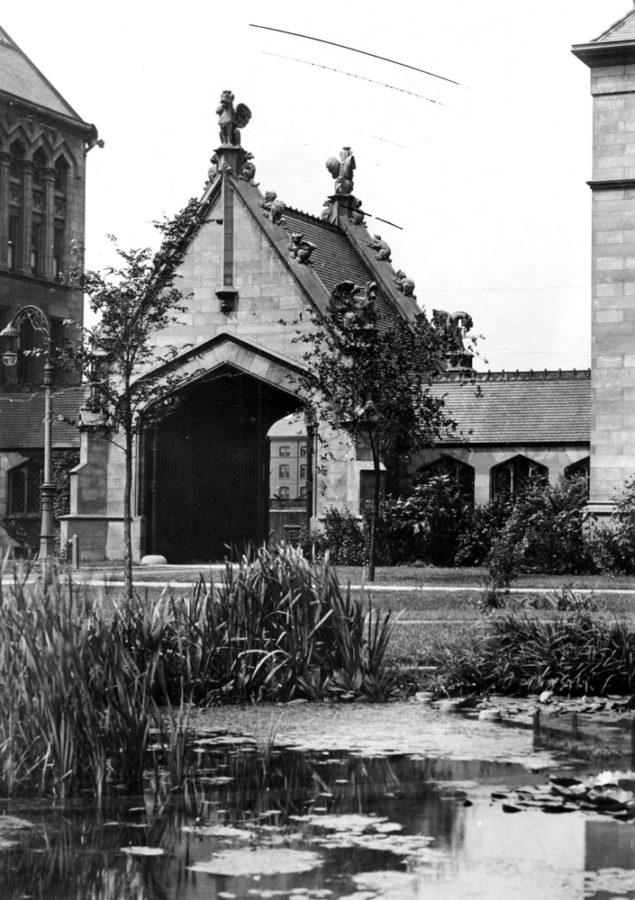One of the most commonly heard complaints about mayoral administrations is that funding and services are too focused on the central business district (CBD). This drains resources from the neighborhoods to the city center. In Chicago, it is a widely held belief that our neighborhoods are similarly suffering such neglect while the CBD absorbs urban beautification funding. I am proud to state that such a situation is far from the case. Not only does the City of Chicago go to great lengths to improve its neighborhoods, but it even takes a step further to make sure that projects done within the CBD have benefits that go beyond the skyscrapers and residential towers. This extensive program can be seen in the Aldermanic Menu Program, the Capital Improvement Program (CIP) distribution, and the human benefits of Streetscaping.
The Aldermanic Menu is a program that allows all fifty Chicago aldermen to designate which infrastructure items in their wards need attention. Many, but not all, projects are funded through the Menu Program. For this reason it is incorrect to blame Mayor Daley for poor street conditions or unimproved infrastructure. Within the past year the Aldermanic Menu program was increased by ten percent to a total of $66 million, giving each ward $1.32 million per year and bringing the city’s entire CIP up to $1.7 billion. This commitment to infrastructure across the city is not only impressive but displays unprecedented equality with regard to resource allocation.
This is in stark contrast to how past administrations have taken funding and funneled it directly into their favorite neighborhoods (e.g., Jane Byrne). Furthermore, there is money in the CIP that goes to neighborhoods in more dire need. An excellent example of this is the recent completion of the $7.4 million Streetscape project along 79th Street from Ashland Avenue to Wallace Street. This project includes new sidewalks, curbs, gutters, benches, street resurfacing, landscaping, and general neighborhood improvements in order to increase business appeal. Additionally, this is not the only neighborhood that is getting such treatment. 110 city Streetscapes have been completed in the history of this administration, an overwhelming majority of them in the neighborhoods rather than the CBD. These programs not only increase neighborhood business success but also augment general community pride.
It is easy to target the projects that are completed in the CBD as ones that draw money away from neighborhoods, but one must look deeper. Despite the opposition of many union leaders, Chicago has also taken the initiative to privatize some of its landscaping maintenance. This is allowing organizations such as the Chicago Christian Industrial League (CCIL) to use landscaping to develop skills amongst their clients. Next time you notice the flowers along Michigan Avenue, take note that they are maintained by former victims of homelessness, who have found assistance in the CCIL and are now employed because of urban beautification.
Even within the workings of city government, Chicago is taking the extra step to tie together urban beautification and providing services to those of the community in need. On October 4, Chicago announced that the major city departments of Streets and Sanitation, Water Management, Fleet Management and General Services will be hiring ex-offenders. They will be performing work that includes snow removal and de-icing, hydrant and curb painting, tree-pit maintenance, and small machine repair. While this does not employ a huge portion of the ex-offender population, it is a step in the right direction. Coupled with programs that are already being implemented by many private and religious organizations, such city programs could lead to a brighter future for ex-offenders. It is the urban beautification projects that are providing the opportunities for such ex-offender programs and giving both skills and employment to individuals who might otherwise be without assistance.
With urban beautification projects continuing, it is not only incorrect to deem such projects as misallocations of funds, but further-more, it is wrong to claim that they do nothing more than make a street look pretty. While funding is proportioned equally, the CIP also allows for a more intensive focus to be placed upon those areas under grim conditions. Additionally, as such projects require maintenance, they provide opportunities for those in need of employment and skills. With these elements in mind, one must observe urban beautification projects as not only beneficial to the aesthetics of our city, but also to the general welfare of its population.






